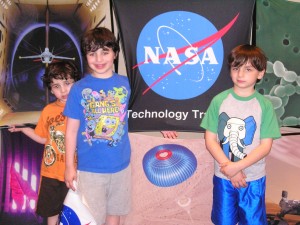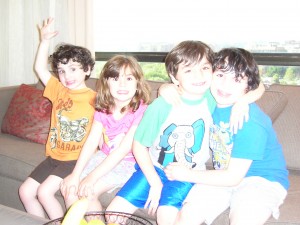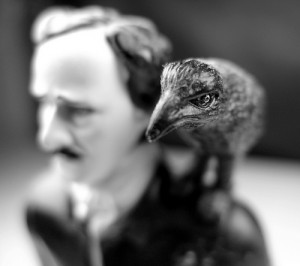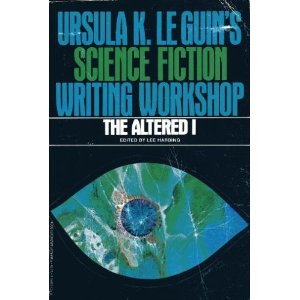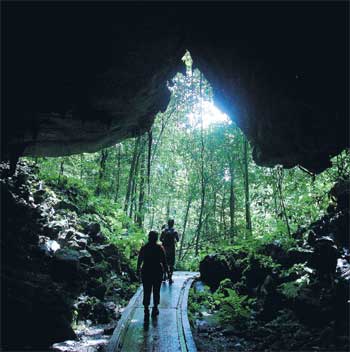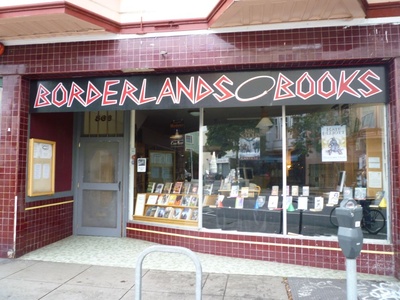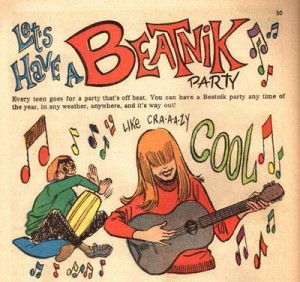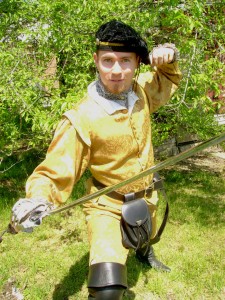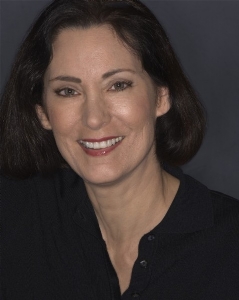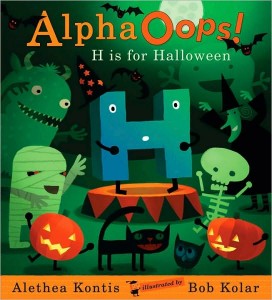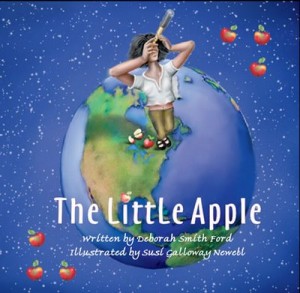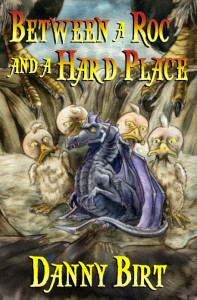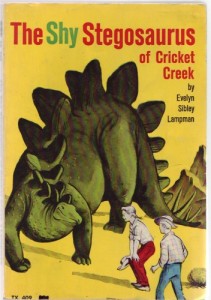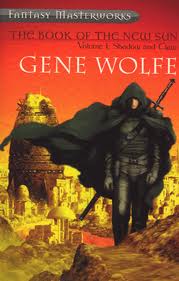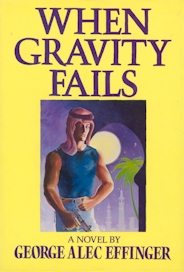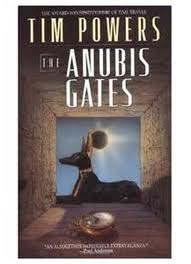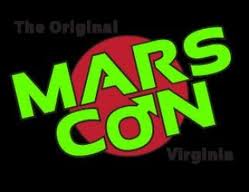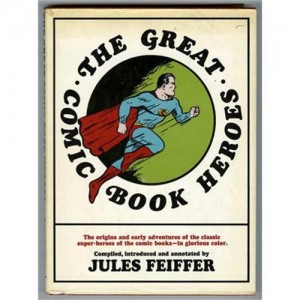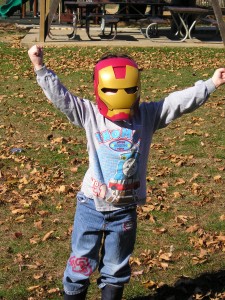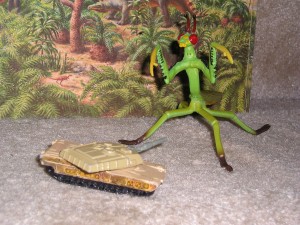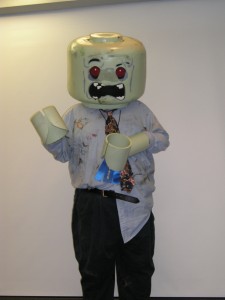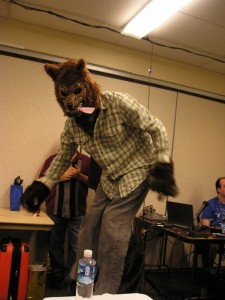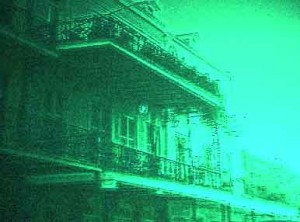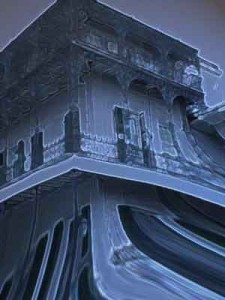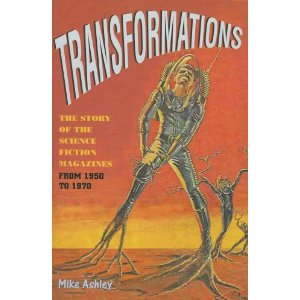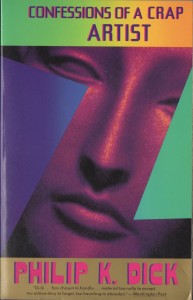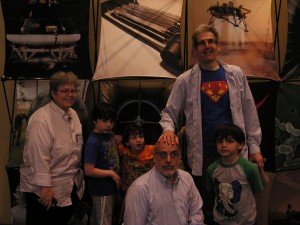
An unfortunately dim photo (L to R) of Judi Castro, Levi, Judah, Adam-Troy Castro, Scott Edelman, and Asher
What I Saw at the Nebula Awards Weekend; or, the Semi-Bummed Out Observations and Kvetchings of an Underpublished Writer, Who is Ultimately Rescued From Melancholia by the Fruits of His Loins (part XXVIII or thereabouts in an occasional series)
What a difference a year makes… or not. SFWA’s Nebula Awards Weekend was held in the Washington, DC area two years in a row, not far from where I live. Last year my attendance got me all pumped up with enthusiasm and fresh ambition; I kicked off what I thought would be a promising collaboration with Ridan Publications and vowed to restart my website. This year? Not so productive; a bit of an emotional roller coaster for me, with my emoticons shifting from pleasant anticipation to pervasive melancholia to a warm, nourishing appreciation of my kids (and later, as per usual, getting fed up with them and wanting them out of my hair for an hour or two).
Oh, I wasn’t on the same emotional roller coaster, certainly, that I’m sure many of the award nominees were (my friend Adam-Troy Castro was nominated in two categories this year, I believe his sixth and seventh nominations, but, once again, did not walk away with one of the coveted Lucite blocks). I was on the periphery, only putting in my appearances because the awards weekend was being held virtually in my backyard and friends were attending who I wanted to see. My roller coaster was more like one of those miniaturized coasters that occupies the kiddy corner of most carnival midways, the one that you need to be taller than Popeye to ride. It doesn’t go very fast, doesn’t rise very high, and it always brings you back around to wherever you started from, then grinds to a noisy halt.
I’d originally only planned to attend the mass book signing on Friday night, since my father was supposed to be flying in from San Diego Thursday night to spend a long weekend with us. Part of the reason for his visit was so that he could celebrate his 80th birthday with me, Dara, and his three grandsons. Getting my father on an airplane is a tricky business; he doesn’t like to fly, and all of the headaches of flying that have accumulated since September 11, 2001 have only made matters worse. Thursday afternoon, his flight was canceled by mechanical problems, after he’d been waiting in the airport for over three hours. He caught me on my cell phone before I headed to Dulles International Airport, and he said he’d try to reschedule to come in the following night on the same flight. That would still allow me to attend the shared book signing at the Nebs in Crystal City, Virginia, so long as I headed straight for Dulles right after the signing. He called me back to let me know he’d been able to get a seat on the Friday afternoon flight. Since I’d already secured Friday off from work, I made plans to attend a full day of Nebula Awards Weekend events before picking him up.
My Friday got off to a rocky start. Trying to make a 10 AM panel discussion, I battled traffic on I-95 heading towards Washington, DC, got befuddled by my Google Maps directions to the hotel, skipped one parking garage that I considered horrendously overpriced, parked (because I was now running late) at another garage that was even more expensive, and then got completely turned around and walked a mile out of my way toward the wrong hotel before being redirected by a bellhop toward the Hyatt Regency. I arrived at my meeting a bit of a sweaty mess, but Dr. Alice Armstrong’s presentation on artificial intelligence was enlightening and interesting. Then I walked over to the SFWA book vendor, both to browse and to make sure some of my books were sitting on the tables. Big negative on that. The manager very kindly apologized and said that the box from IPG (Independent Publishers Group) had never arrived, so he had no books from either Tachyon Publications or Golden Gryphon Press to offer. Kathy Morrow, who was volunteering at the register, offered to take any books I had with me on consignment. I’d brought along a sample/display copy of each of my books, so I took her up on her considerate gesture.
Lunch at a local deli ended up being one of those happily serendipitous affairs wherein one’s friends and acquaintances pop up every time one turns around. I ended up lunching with Jamie Todd Rubin (frequent contributor to Analog and blogger on Golden Age science fiction), Alethia Kontis (author of AlphaOops! The Day Z Went First, AlphaOops! H is for Halloween, and the recently published YA fantasy Enchanted), and two members of the James River Writers Group. After lunch, Alethia and I hurried back to the “Improving Your Website” workshop, which I’d attended last year (when my old website was long defunct and had been colonized by a porn store, and I hadn’t yet started my new WordPress site). Utilizing me (as they did last year) as a humorous object lesson, the facilitators emphasized the importance of continuing to pay annual fees to domain registry services by demonstrating how allowing one’s domain name registry to lapse allows all sorts of opportunistic businesses to claim jump one’s old web address. Last year, www.andrewfoxbooks.com had been a porn site; this year, we discovered that the site’s registry had lapsed yet again, and the new owners were using the my former web address to sell condominiums in Japan. This represented a social promotion for me, it seemed; maybe come next year, my name will be selling commemorative dinner plates featuring the authorized likenesses of the stars of James Cameron’s Titanic. My new website, by the way, got a clean bill of health from the workshop’s facilitators, whom I thanked for having lit a fire under my tuchis last year.
My wife left me a message while I was in the workshop. My father wouldn’t be coming, after all; his afternoon of waiting in the airport had drained him, and he’d decided he just wasn’t up for a repeat and for then sitting on an aircraft for five hours. I couldn’t blame him, certainly not at his age, but I was very disappointed. I hadn’t fully realized how much I’d been looking forward to his visit and celebrating his birthday until I learned he wouldn’t be coming. He has been one of the few relatives who has regularly come to visit my kids, and I’ve been anxious to see their ties grow stronger. I’d planned a very full weekend for us and gotten my boys all revved up. I think I ended up at least as disappointed as any of them.
Hoping to cheer myself up, I decided to catch one more panel discussion before the mass signing, the one called “Tragedy is Easy,” discussing the use of humor in science fiction. The panel was loaded with heavy hitters — Connie Willis, James Morrow, James Patrick Kelly, and SFWA President John Scalzi. Illustrating, perhaps, that the mechanics of comedy can be difficult to analyze, even for such a distinguished collection of practitioners, much of the panel consisted of exchanges of bon mots, rather than the program teaching “Comedy Writing for Advanced Writers” that had been advertised. The best exchange of the panel came when the subject of The Hitchhiker’s Guide to the Galaxy arose. James Patrick Kelly compared the impact of that book to the impact of Star Wars. Just as Star Wars in 1977 had precipitated an “extinction event” for the run of post-apocalyptic science fiction films which had preceded it (films like Logan’s Run, A Boy and His Dog, and Zardoz), so did the overwhelming success of Hitchhiker’s Guide wipe out virtually all subsequent editorial interest in any form of humor in science fiction not written in the British music hall tradition. (And perhaps that helps to explain the trajectory of my career in the field.)
Then came the signing. Ask most writers: group signings of almost any size or venue are slightly humiliating at best, mortifying at worst. The first mass signing I participated in was at Comic Con International in 2004, just after Bride of the Fat White Vampire came out. Del Rey had invited me. They had also invited China Mieville, whose The Iron Council came out at the same time. I sat next to China, who could not have been nicer. His line remained two dozen deep throughout the signing. I had no line at all. I think one person wandered over to talk with me. If we had been movies at a multiplex, China would have been Avatar and I would have been Jerry Lewis’ magnum opus The Day the Clown Cried. The best one can do when participating in an event of this sort is to consider it a social venue and squeeze in as much fun conversation with your fellow sufferers as possible.
Friday night, I at least had the good fortune to be sitting with Adam-Troy and Judi Castro. Adam, as I mentioned above, had been nominated for two Nebula Awards and had also just embarked on what promises (we all hope) to be a super-duper successful middle grade horror-fantasy series that is slated to receive big-time support from its publisher. Adam and Judi are dear friends; when Dara, Levi, Asher, and I were stuck down in South Florida after Hurricane Katrina in 2005, Adam and Judi collected clothes and books and toys for my two baby sons (Levi was 21 months and Asher was 6 months old), and they even found us a Cozy Coupe play car that the boys adored. I hadn’t seen the Castros in a number of years, so we had lots of catching up to do. Their presence saved me from being a complete grump, between my father’s canceling his visit and my vague sense of being a beggar at a banquet. (One’s sense of being Charlie Brown at Halloween time — “I got a Hershey’s bar!” “I got a bag of candy corn!” “I got a rock…” — is all relative, it turns out; during the signing, a couple of my pals with recent book publications under their belts and better deals on deck, who’d been merrily signing away throughout the evening, conferred with each other regarding who among the assembled writers had attracted the longest autograph lines. Another friend in the biz once told me that he’d heard that Ursula K. Le Guin would never read the People and Publishing column in Locus because she found it too painful to learn about the advances and deals other writers were receiving.) Anyway, after the signing was through, I wandered back out to the book selling area to see whether any of my sample copies had sold. I gathered all three and trudged home with them. And here I’d had the audacity to worry about IPG’s failure to deliver a carton of my books. That’ll learn ya…
The next day I decided to take Levi, Asher, and Judah back to Crystal City with me. The Castros had hoped to see the boys the previous night (I’d been planning to have the whole gang with me prior to my father’s travel plans changing). Also, Gordon Van Gelder and I had been trading fatherly gibes on FaceBook about fixing up his beautiful six-year-old daughter Zoe with one of my boys (who range in age from five to eight), and Zoe had seen our exchange and had been looking forward to meeting my crew. Gordon and Zoe had showed up at my table at the signing, expecting to see Levi, Asher, and Judah, and I’d had no boys to share and had felt like a heel for disappointing such a vivacious young lady. So I shlepped the boys out of the house, tried (unsuccessfully) to burn off some of their excess energy by letting them jump in bounce houses for an hour at the Prince William County Healthy Families Expo, drove them up I-95 to Crystal City, and fed them lunch at Subway before taking them into the Hyatt Regency. We ran into my good friend Mark Sarney, SFWA’s newest member (he’d joined two days earlier), then wandered over to the NASA table where a presenter (who was actually Colonel E. Michael Fincke, a retired astronaut, but I didn’t learn that until after the boys had talked with him, darn it) was handing out fistfuls of cool free stuff, photos of nebulae and galaxies and holographic postcards of parts of the International Space Station. Adam and Judi Castro came down from their room and met the kids, whom they hadn’t seen since 2005 (and they’d never met Judah before). When the boys became restless (as boys will tend to do), Judi suggested that we ride the hotel’s glass elevator, which provided panoramic vistas of Crystal City and parts of Washington, DC. That amused the boys and stanched the complaints of, “I’m bored!”
Then Adam mentioned that there was a SFWA hospitality suite up on the 18th floor, and my boys have been to enough science fiction conventions that their eyes instantly light up when they hear the words, “hospitality suite.” So back up we rode. Jackpot! The H.S. had cheese, crackers, grapes, Diet Coke, juice boxes, mini chocolate bars, and a bowl filled with malted milk balls — all the basic food groups necessary to bridge the insufferable stretch between my boys’ lunch and dinner times. Plus, the view out the suite’s windows was even better than the view from the glass elevator.
Gordon Van Gelder gave me a call to let me know that his wife Barbara and daughter Zoe had gotten back from their sightseeing in Washington. They joined us in the hospitality suite. Even though I was supposed to get Levi to a birthday party back in Woodbridge for 5 PM, I decided to stick around for a while and let the kids get to know each other. Zoe was a little shy at first, but after ten minutes or so the four kids formed themselves into a little gang and took over the suite, commandeering the couches closest to the windows so they could lean over the window sills and stare at the big world outside the windows. Judah entertained (at least some of) the adults with his renditions of Japanese kaiju monster roars. Levi worked on one of his street map pictures and asked the Castros if he could consider them his “fake grandparents” (they graciously said yes). Asher, my social butterfly, talked with Zoe and pointed out interesting landmarks eighteen stories below (“Look! There’s the swimming pool, see?”). I talked shop with Gordon, which I enjoyed greatly (Gordon, apart from being one of SF’s most distinguished editors, is very charming), although I gradually grew more and more guilty about making Levi late for his birthday party at Chuck E. Cheese’s.
Finally, it was time to go. The kids had gotten along so well that I felt my typical pangs of “Darn! I wish they lived closer!” As soon as we got back down to the lobby, Judah, my five-year-old, announced, “I have a girlfriend now!” He repeated this assertion all the way back to the car and until we got back onto I-95 and headed south, at which point his brothers managed to hush him by insisting that if he said it one more time, they would both vomit. I told them this wasn’t a nice thing to say to their younger brother, who was only expressing honest affection (if in an irritatingly repetitive way). Judah decided to get the last word in by insisting that Zoe was HIS girlfriend, not Asher’s. Asher said disdainfully that Zoe was his friend, not his girlfriend. Which seemed to satisfy Judah. Who later reported to his mother, “I am in love now!”
One thing about having three young boys… I find it impossible to stay bummed out for very long. They simply won’t allow it. Exhausted from them? Yes. Pushed to wit’s end with them? Sometimes. But blue and melancholy? My boys, God bless them, are kryptonite to the blues.

